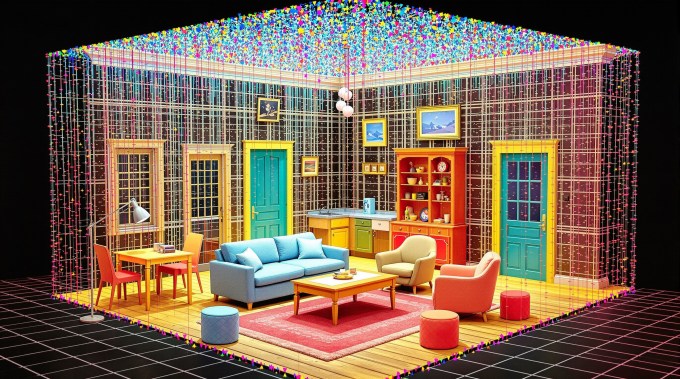From 4o of Openai to stable dissemination, the AI Foundation model that creates realistic images from a text prompt, is now abundance. In contrast, the foundation models capable of generating full, consistent 3D online environment from a text prompt are only emerging.
Nevertheless, this is the only question, when, if not, these models will be easily available. Now one of Europe’s most prominent AI 3D model researchers, Mathius Nisner has taken a holiday of an entrepreneurship of his visual computing and absence from AI Lab at Munich’s Technical University, which is working in the field: Spatial.
Earlier, a cofounder in synthesia, a realistic AI avatar startup was a value of $ 2.1 billion, the Nisner has raised unusually large seed rounds for a $ 13 million European startup. The era was led by Earbird Venture Capital, a leading European early-phase investor (for example Pikgams) with speedinwests and several high-profile angels.
This round shape is even more impressive when keeping in mind that the Spitial has not much to show the world in addition to the recently released teaser video, showing how a text prompt 3D room can produce.
But then, there is a technical team that NIESSNER assembled: Ricardo Martin-Brula, who first worked on Google’s 3D teleconferencing platform, now called beam; And David Novotney, who spent six years in Meta, where he led the company’s Text -to -3D asset generation project.
Their collective expertise will give him a chance of a fight in a space that already includes some contestants, focusing the same focus on photorialism. Odyssey is, which raised $ 27 million and is going after cases of entertainment use. But there are also world labs, the startup installed by AI Pioneer Fi-Lee, and already had a value of more than $ 1 billion.
NIESSNER feels that it is still a low competition that is present for other types of foundation models, but also he and others are following the ‘big vision’.
“I don’t just want a 3D world. I also want this world to behave like a real world. I want it to be interpretive and [let you] Do the stuff in it, and no one really torn it, ”he said.

Video game for real world
No one has really torn yet yet what can be the demand for photorialistic 3D atmosphere. The promise of a ‘trillion-dollar’ opportunity from digital twins to a promoted reality seems enough to stimulate the VC, but is also unclear and versatile that is sufficient to make a Go-to-market strategy. The most obvious use is the case for video game construction, but these models can also contain entertainment applications, 3D visualizations used in construction, and eventually can be used in real world for areas such as robot training.
NIESSNER is hoping to bypass the issue in which the developers have been licensed by a license to the foundation model to come up with the downstream application for specific uses. He also listed a fourth cofounder, former Kazu executive Luke Rogers, once during his roommate at Palo Alto, when he was an assistant professor in Stanford, to help him from the business.
One of the first tasks on the roadmap of the spatial must identify the partners who can work with the earlier models, vs. those who will have to wait for high quality.
“We want to work with at least a few partners,” Nisner said, “and see how they can use API.”
Compared to other well -funded AI startups, spatial is putting revenue on its agenda at a higher level. But first, it will have to spend something, on calculating both and hiring. For the latter, its focus is on quality, not in quantity. According to the Neesner, “The team is not going to grow immediately to hundreds of people; this is not happening yet, and we don’t need it.”
Instead, Niessener and their cofounders are working on creating large and more interactive 3D spaces, where, for example, a glass can be really shattered. It would unlock that the Niessner is referred to as the ‘sandy of the holy comb’: that a 10 -year -old child can type in some lessons and make his video game in 10 minutes.
In his view, this ambitious goal is truly more achievable, which may look like a low-cut fruit-allow users-because most gaming platforms still tightly control what third party can add what the third party can add. This is of course, until they decide to make it themselves, as Roblox can be. But by then, the spitial may be busy changing the CAD; The next chapter in the 3D generation is only the beginning.


